

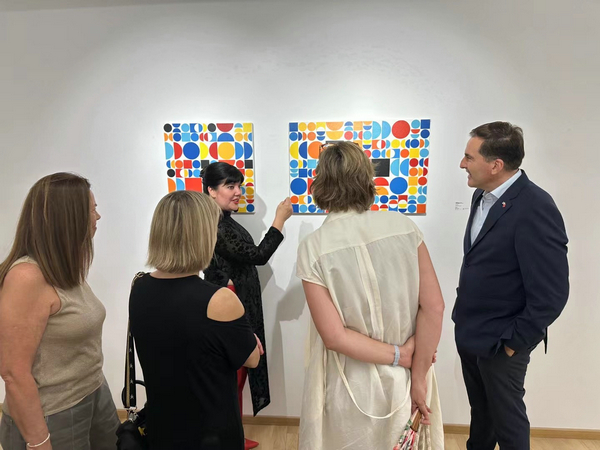
Uruguayan curator and gallerist Diana Saravia introduces Carlos Presto’s art to guests at the opening of Games of Illusionat the Uruguayan Art Space in Beijing’s 798 art district on Aug 20, 2024. [Photo provided to chinadaily.com.cn]
Squares, circles and triangles of vibrant colors neatly line up on the canvases, forming orderly compositions of mathematical allure that enchant and mystify viewers in equal measure.
Those geometric shapes, by Uruguayan artist Carlos Presto, are close to each other but carefully separated with small gaps between them, evoking the social distance that people had to practice when the COVID-19 pandemic was ravaging the world.
Presto's paintings are on display at his solo exhibition Games of Illusionat the Uruguayan Art Space in Beijing's 798 art district until Sept 20, offering Chinese audiences a window into the Latin American country's contemporary art.
Mostly selected from the artist's Virus Series, with works reflecting the experience during the pandemic, representing in different forms an analysis and recreation of social estrangement and the search for a reunion, said Uruguayan gallerist Diana Saravia, who co-curated the exhibition with Chinese curator Zhang Siyong.
"The purity of Presto's work makes us wonder how he achieves such technical perfection. His passion for rigorous mathematical calculation turns his circles and squares into a complex and ordered puzzle of great beauty," Saravia told the China Daily website during a recent interview.
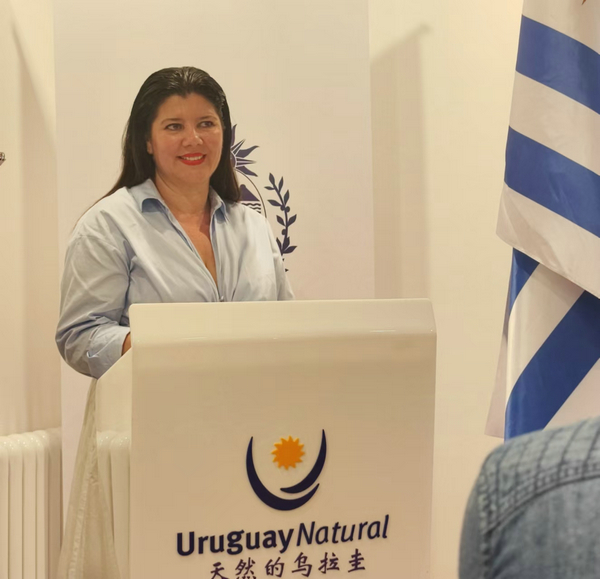
Uruguayan curator and gallerist Diana Saravia gives a talk about contemporary Uruguayan art in Beijing on Aug 23, 2024. [Photo provided to chinadaily.com.cn]
Presto, 64, is also one of around 20 artists represented by the Diana Saravia Gallery in Montevideo, Uruguay's capital and largest city.
Fernando Lugris, Uruguayan ambassador to China, commended Saravia as a leading figure in Uruguay's contemporary art scene. Yet, the 52-year-old gallerist came from humble beginnings.
"I was born in Cerro de las Cuentas, a small town of 300 inhabitants. At the age of 18 I set out for Montevideo, a city that allowed me to develop my studies and activity and where today, with more than 25 years of work, I position myself as a leading and avant-garde woman in the cultural scene of my country," she said.
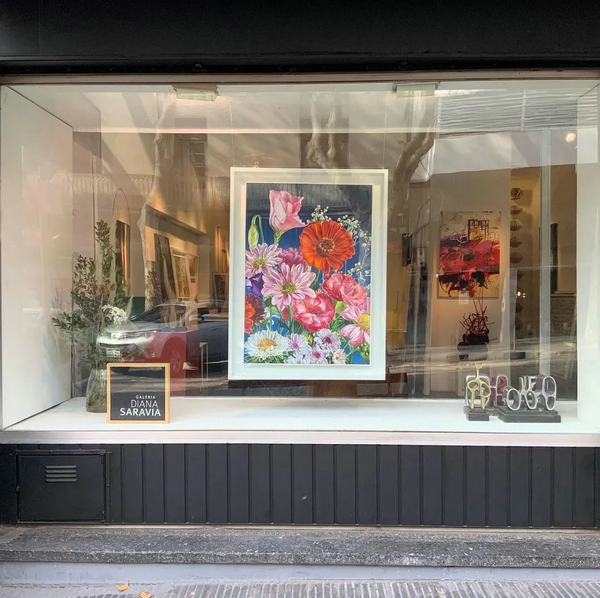
A photo of the Diana Saravia Gallery in Montevideo, Uruguay’s capital and largest city. [Photo provided to chinadaily.com.cn]
Calling herself an enthusiastic, courageous woman dedicated to the management, dissemination and marketing of works of art in the local and international circuit, Saravia started as a salesperson, which helped her to learn how to sell artwork at international art fairs.
During a talk she gave at the Uruguayan embassy in Beijing on Friday, the curator lamented that despite Uruguay's booming contemporary art, the country has a small art market, which necessitates bringing the country's art to the global market.
"Believe me, the level of art in Uruguay is marvelous. We just need to be able to show it to the world," she said.
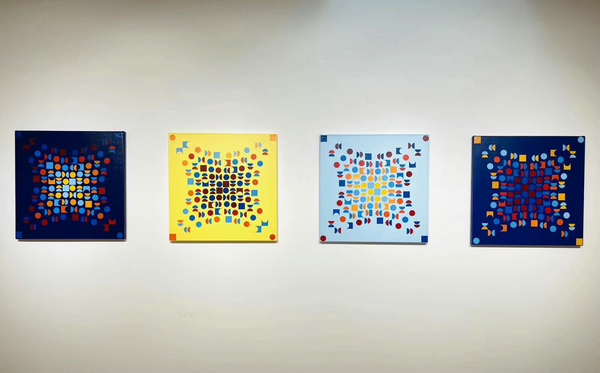
Uruguayan artist Carlos Presto’s paintings are on view at Games of Illusionat the Uruguayan Art Space in Beijing’s 798 art district through Sept 20, 2024. [Photo provided to chinadaily.com.cn]
Uruguayan contemporary art is known for Constructive Universalism, an art theory in which simplified universal symbols, including references to pre-Columbian cultures, were set within grids proportioned according to the Golden Section. The theory was advocated by internationally renowned Uruguayan artist Joaquíoaquet wiGarcía (1874-1949), who established the School of the South, a workshop in which he encouraged students to seek inspiration locally rather than globally, while at the same time establishing an autonomous artistic tradition, according to Saravia.
"Many artists follow certain guidelines of that school and develop their works based on the golden ratio. The capacity for creation is infinite and in a country of only 3.4 million inhabitants there are many creative artists and craftsmen," noted the veteran gallerist.
"Through some international fairs, I can affirm that the works of the artists we exhibit are always of the highest quality compared with other galleries," she emphasized.
To increase the visibility of Uruguayan art, her gallery has been regularly participating in local and global art fairs such as Pinta Miami in the United States; Art Lima in Peru; JustMAD in Madrid, Spain; and ESTE ARTE in Punta del Este, Uruguay.
In the meantime, the Uruguayan curator and gallerist has been committed to promoting her country's contemporary art in China.
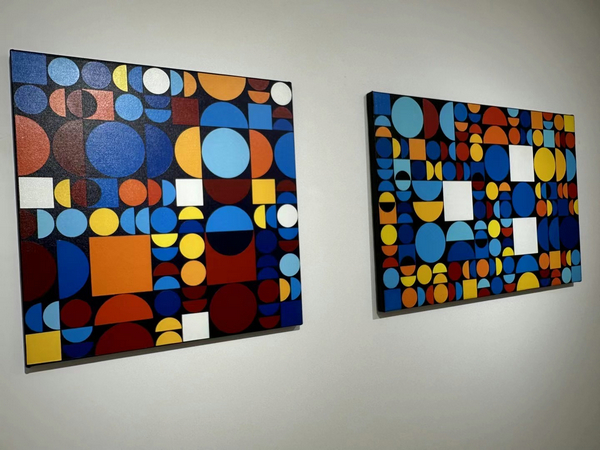
Uruguayan artist Carlos Presto’s paintings are on view at Games of Illusionat the Uruguayan Art Space in Beijing’s 798 art district through Sept 20, 2024. [Photo provided to chinadaily.com.cn]
In 2016, the Diana Saravia Gallery sent nearly 20 works by six Uruguayan artists to the Uruguayan Embassy in China. In the following years, those works were exhibited in Chongqing, Dalian, Yulin, Zaozhuang, Taiyuan and other Chinese cities, ensuring that China-Uruguay cultural exchanges were not interrupted during the pandemic.
Her visit to Beijing to organize Presto's exhibition this month marks her first trip to China.
"It is really amazing how beautiful everything is. I am surprised at every step. The flowers, the greenery, the beauty and aesthetics in the buildings, and the spaces within the city. The temples, their history and the care they take of them. There is a lot of love (among Chinese people) for their traditions and past," she said.
The Uruguayan gallerist said her visits to the Uruguayan Art Space and the Central Academy of Fine Arts made her surprised by the production and quality of contemporary artwork in Beijing and she found Chinese calligraphy as an interesting technique.
"I think we should generate good art exchanges. We speak different languages but the plastic language is very compatible," she concluded.
点击右上角![]() 微信好友
微信好友
 朋友圈
朋友圈

请使用浏览器分享功能进行分享
